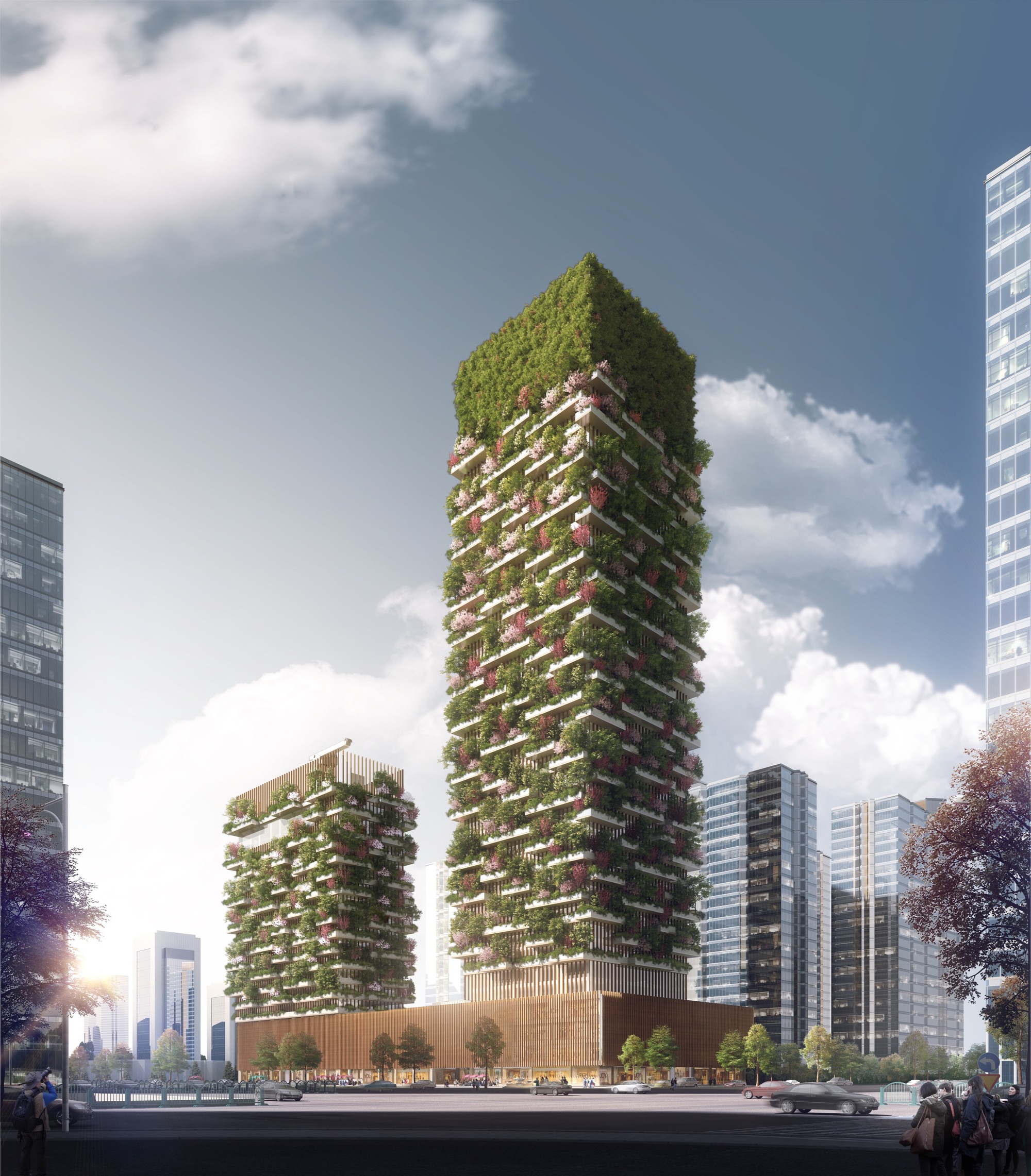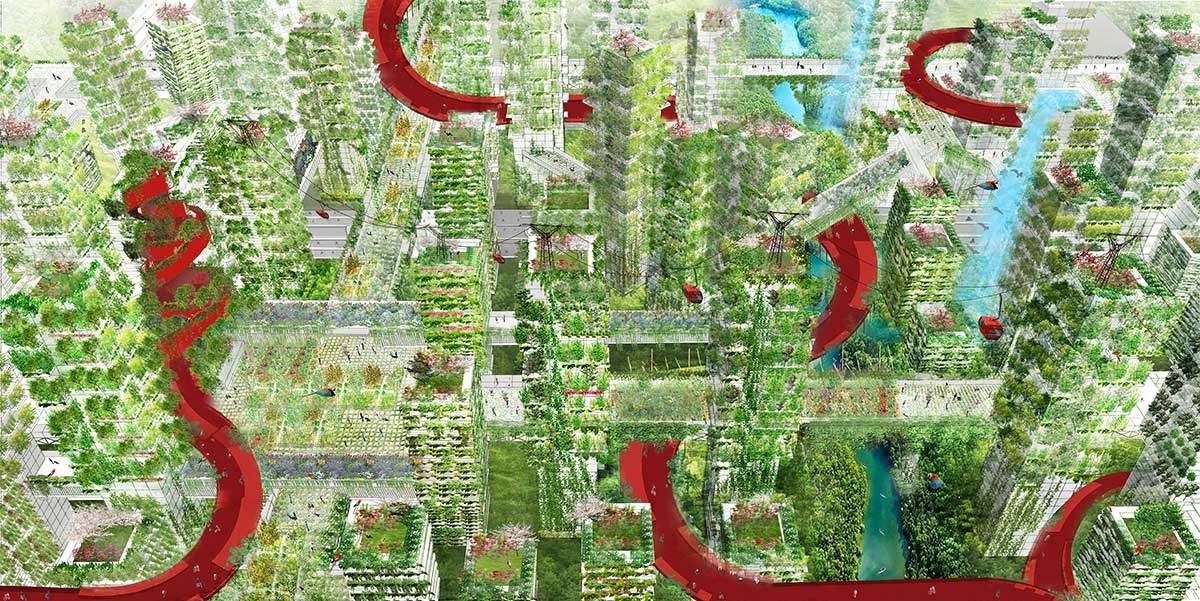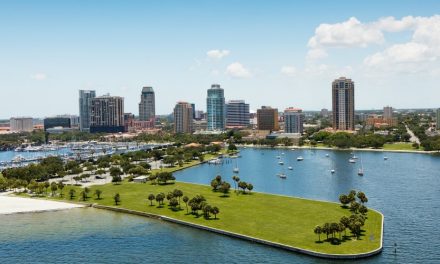When Stefano Boeri imagines the future of urban China, he sees office blocks, homes and large cities choking on a toxic diet of fumes and dust.
The Italian architect, made famous for his tree-clad ‘Bosco Verticale’ (Vertical Forest) skyscraper complex located in Milan, unveiled plans for a similar project in eastern China city of Nanjing.
RELATED ARTICLES:
- Tesla/Solar City has Retrofitted an Entire Island to Run Purely Off of Solar Power
- Sustainable Houses: The Eco-Friendly Genius of ‘Earthships’
- Family Thrives In The Arctic Circle By Building Cob House Inside A Solar Geodesic Dome
The project will be composed of two neighboring towers coated with 23 species of trees and more than 2,500 cascading shrubs. The structures will reportedly house offices, a luxury hotel, a museum, and a green architecture school.
But Boeri now has plans to expand on this idea create entire “forest cities”:
“We have been asked to design an entire city where you don’t only have one tall building but you have 100 or 200 buildings of different sizes, all with trees and plants on the facades,” says Boeri. “By 2020 we could imagine having the first forest city in China.”
Boeri described his “vertical forest” concept as a targeted intervention designed to bring new life to a small corner of China’s polluted urban sprawl. His buildings would suck 25 tons of carbon dioxide from Nanjing’s air each year and produce about 60 kg of oxygen daily.
“It is positive because plants, trees, and shrubs contribute to the cleaning air, absorb CO2 and produce oxygen,’ the architect said. “Plants are an amazing contribution in terms of absorbing the dust produced by urban traffic.”
Located in Luizhou, a city of 1.5 million residents in the southern province of Guangxi, Nanjing Green Towers will be the first Vertical Forest built in Asia.
Boeri, 60, first came to China in 1979. Five years ago he opened an office in Shanghai, where he leads a research program at the city’s Tongji University.
Boeri believes officials in China understand they need to embrace a new, more sustainable model of urban planning involving settlements of 100,000 people or fewer that are entirely constructed of “green architecture”.
“What they have done until now is simply to continue to add new peripheral environments to their cities,” he said. “They have created these nightmares – immense metropolitan environments. They have to imagine a new model of city not about extending and expanding but a system of small, green cities.”
Boeri describes the idea behind his shrub-shrouded structures as simple:
“What is spectacular is the nature, or the idea of having a building that changes color with each season. The plants and trees are growing and they are completely changing. This idea of vertical forests can be replicated everywhere. I have no problem if there are people who are copying or replicating. I hope that what we have done can be useful for other experiments.”
Title photo credit for the images below:








*Article originally appeared at Minds.












